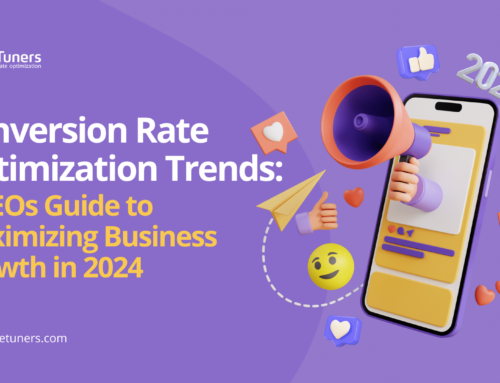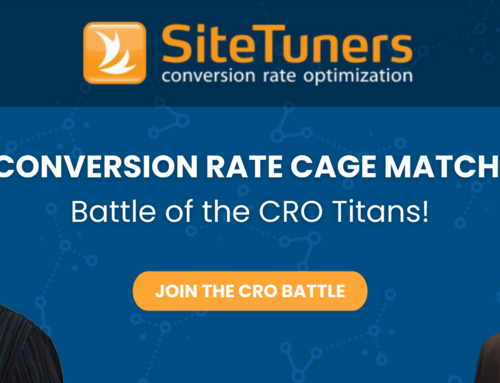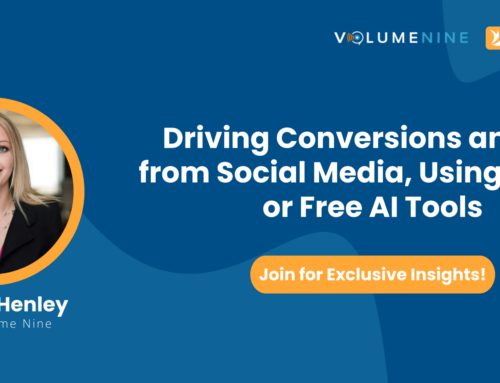Invesp caught up with Tim Ash to pick his brain about the changing landscape of conversion rate optimization and the challenges optimizers face.
Plus, get to know the SiteTuners CEO as he talks about his daily routine, his preferred social media channel, and his favorite online marketing tool and book in this interview.
Here are the highlights:
Invesp: Let’s talk about conversion optimization – the industry. How have you seen it change over the last 10 to 15 years?
Tim: I think the main thing is people know what is, for starters. And over the years, it has come to be recognized as one of the most important activities that you can do. What we’re seeing now is kind of an institutionalization of it.
There are people that have conversion rate optimization as their job title. It’s similar to the trajectory that the SEO and search engine marketing people had – it’s a job description; it’s somewhere on your org chart. And increasingly you’re seeing director and VP-level, and even C-level people, doing optimization and being in-charge of it.
Invesp: What are some of the top challenges you see when companies come to implement a conversion optimization program? What are the challenges you see for clients and for you as a service provider?
Tim: The biggest challenge is how they view conversion optimization inside of their company. Maybe they’re not aware of it; they’re bringing us in as a consultant. But if they relegate it to what I call the digital marketing ghetto (I’ve heard it described as a swim lane – ‘we have pay per click, we have SEO, we have CRO’), and if they treat it as a tactical testing activity, that spells death.
There are a lot of companies and agencies that just talk about testing velocity or testing as the only way to do something. To me, that relegates it to settling bar bets.
We’ve developed a very comprehensive conversion maturity model that looks at the whole company –skillset, organization, culture, process, measurement and accountability, and of course the whole customer experience, not just the web. When you look at it that way and it reports up to strategic levels inside the company, that’s when things get done.
We’re working as change agents inside the company to move them along the conversion maturity model.
Find out where your organization is on the conversion rate optimization roadmap.
Click here to read How Conversion Rate Optimization-Mature Are You?
Invesp: You speak at different conferences, you run the Conversion Conference. What are some of your favorite conferences? If somebody comes to you and they want to attend two conferences …
Tim: It’s really difficult to answer that. You would have to be really clear about what you want out of the conference. They have a different DNA, if you will. Some are focused on the side meetings and the deals you do in the backroom. Others are about education. Others don’t care about education at all – it’s all about the hundreds of vendors in the expo hall. Some are experiential – they like to get more of a millennial flavor ‘let’s go skydiving’ or something.
It really depends on the vibe of it – so find out about the vibe and be really clear about what you want out of it.
Invesp: Let’s talk specifically about the Conversion Conference. What other elements really help the conference anchor as a leading industry conference?
Tim: Our focus has always been on education. We really pride ourselves in the programs we put together. I’m proud to say that we’ve been improving on that over the years and the Vegas show in 2016 was our highest rated ever by far. That’s the core of it.
Getting to meet some of the vendors and service providers is important. And we’ve also had some experiential component that we’ve added into it with activities like the zipline between the towers of the Rio and the networking events, and so on.
Invesp: Let’s move away from talking about business. Let’s talk personal. Daily routine?
Tim: The most important stuff needs to be banked at the beginning of the day. So, I get up, walk my kids to school …
Invesp: What time do you get up?
Tim: Six-thirty … Make them breakfast, make sure they’re out the door, walk them about a third of a mile to school. Then, I go on my power walk and do my Tai Chi by the Pacific Ocean, come back home. That way, all the emotional good stuff and the physical stuff’s banked at the beginning of the day.
Invesp: What time do you usually go to the office?
Tim: We treat people as adults and have a flexible schedule, so I’m there about 10:00 to 6:30.
Invesp: Social media – I see that you’re active on Facebook.
Tim: Yes, Facebook is my preferred one. Twitter and LinkedIn as well to some degree.
Invesp: How about Twitter? That’s a question I keep on asking everybody because I remember 10 years ago when we used to have meaningful conversations on Twitter. It seems now there’s less and less conversations. What are your impressions on that?
Tim: It depends on whether you’re doing personal or professional stuff. I tend to mix both on Facebook and Twitter, and I only do professional stuff on LinkedIn. Twitter is, of course, sound bites, which is not the best way to deepen relationships. I think it’s better for awareness. Also, we just try to retweet high-quality conversion-related stuff for people to become aware of. That’s the primary reason I use it.
Invesp: Your favorite tool? Something that you use regularly.
Tim: Usertesting.com. It’s understanding what goes on inside the minds of your visitors, and how they actually interact with your web site should be front and center in anything you do.
Invesp: Your favorite book?
Tim: The one that I’ve been talking about a lot lately is Phil Barden’s ‘Decoded.’ It combines direct response as well as branding. It’s from a very knowledgeable guy in the UK – it has some of the latest knowledge on neuromarketing and how brand frames the offer, if you will.



